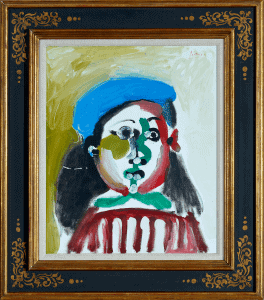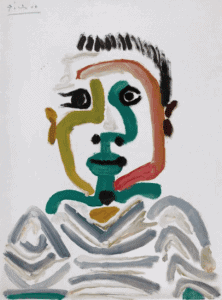Pablo Picasso, Fillette au béret

During the 1960s, Picasso painted many series of portraits. Most of the paintings from this period in the artist’s life portrayed his wife, Jacqueline, by far his most frequent subject, or young boys or men dressed in striped sweaters and with black speckled hair and sometimes beards. Portraits of young girls from the mid 1960’s are rare but Fillette au béret[1] (1964) has many similar attributes to Picasso’s paintings of young boys dating from the same time. The figures are brought to life by a series of lines, dots and dashes and the viewer’s perception of the faces is being challenged by the formation of the nose and the blurred yet strong brushstrokes. During this time, he produced several paintings of children in his surroundings. Fillette au béret (1964) is included in a series of three paintings, which were all painted on the same day, 12 December 1964. It is the only portrait of a female out of the three; nevertheless, Picasso painted them all in the same immediate and spontaneous way, which characterizes many of his later works.





